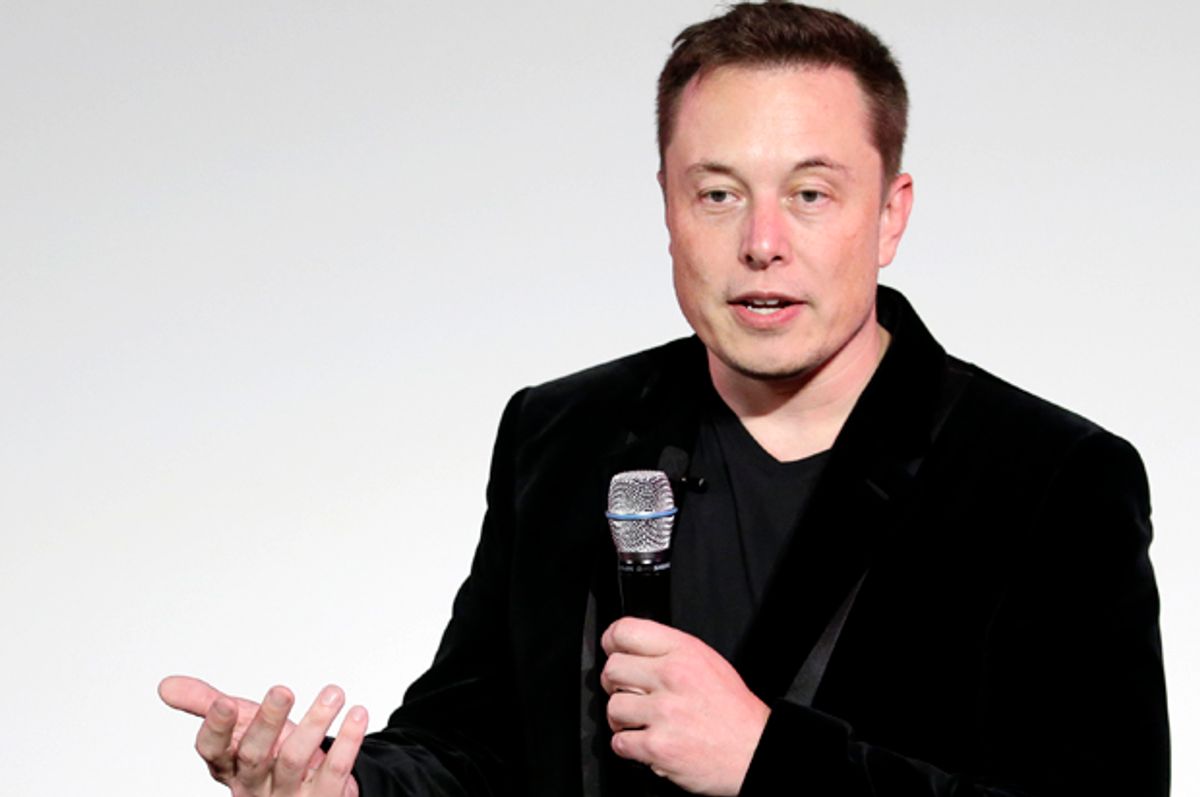Visitors to the site of a SolarCity solar panel factory under construction in Buffalo, New York, are greeted by a rusty reminder of the city’s long-gone industrial backbone.
Old rail cars and giant turbines discovered by construction workers in 2014 have been put on display as a symbol of what the construction site represents: turning a blighted part of downtown into a high-tech manufacturing hub. The equipment had been buried and left behind by Republic Steel when globalization sent one of the nation’s biggest steelmakers into insolvency and collapse in 1984, helping turn Buffalo into one of the nation’s poorest larger Rust Belt cities.
Now thanks to hundreds of billions of taxpayer dollars, the site is part of New York Gov. Andrew Cuomo’s Buffalo Billion initiative, an ambitious effort to breathe new economic life into upstate New York. If all goes as planned, the SolarCity factory will anchor a development zone that will include centers of genomic research and information technology, creating thousands of jobs locally and for the state.
On Tuesday, Japanese electronics company Panasonic and luxury electric car maker Tesla Motors (which completed last month its $2 billion acquisition of SolarCity) announced they’ll start producing solar cells and modules as early as next summer from the factory. SolarCity – the country’s largest solar services company, but a company facing steep quarterly losses and an immense amount of debt – says it will spend $5 billion in Buffalo through 2025 on operations and supply chain investments, certainly a hefty sum if in fact SolarCity’s ambitious vision comes through over the next decade.
But the project won't just test SolarCity’s cash flow. It will also be a big test for America’s efforts to revitalize manufacturing through solar energy manufacturing projects. In an era of cheap Asian solar panels, can the U.S. sustain a solar-energy manufacturing base without subsidizing home-grown manufacturers, like New York is doing?
Whatever the case may be, U.S. demand for solar energy has rocketed in recent years as the cost of investing in solar projects hit an important benchmark in 2016: It’s now cheaper in many places in the world, including the U.S., to invest in solar than comparable fossil fuel-related projects, according to a World Economic Forum report released this month. Solar panel prices are plunging fast, in part to a massive flood of Chinese cells in recent years that have spurred antidumping tariffs in the U.S. and Europe. Meanwhile, solar power capacity in the U.S. jumped to 35.8 gigawatts this year – enough to power 6.5 million homes – from just 1.1 gigawatts in 2008, according to the Solar Energy Industries Association.
To help SolarCity achieve its goals, New York’s taxpayers are investing $750 million in the solar plant, including $350 million for site development, $150 million in tax credits and $250 million in “other state resources.” For its part, SolarCity has invested an additional $150 million in the factory, according to Buffalo News. Panasonic’s pledge of 30 billion yen, or $256 million, for production equipment at the factory puts the total private-sector investment in the project at $406 million, a fraction of SolarCity’s $5 billion (over 10 years) promise to the people of Buffalo and state taxpayers.
The governor’s office claimed when the project was announced three years ago the solar manufacturing plant will create 8,000 jobs, including 3,000 statewide, but according to the Associated Press, Tesla said the plant will create 1,400 jobs in Buffalo, 500 jobs in when it starts operations, and an additional 5,000 jobs over a decade as it fleshes out its local operations.
SolarCity is the country’s largest solar-power provider through its financing program that leases rooftop systems to customers instead of requiring them to purchase costly equipment. SolarCity benefits from federal investment tax credits while homeowners get credit for feeding extra power back to the grid in a process known as net metering, the benefits of which vary greatly from state to state.
But aside from those subsidies aimed to lure Americans away from fossil fuels, SolarCity’s efforts to profitably build solar panels in the U.S. will hinge largely on whether it can successfully integrate Tesla’s energy storage units, manufactured from Tesla’s work-in-progress “gigafactory” battery plant near Reno, Nevada, with the company’s innovative solar roofs that Tesla and SolarCity co-founder Elon Musk unveiled in October.
If SolarCity’s factory plans in Buffalo succeed, they won’t be without considerable and controversial investment from the public, and from federal efforts to keep out cheaper panels from state-supported Chinese solar companies. If SolarCity’s plans in Buffalo fail, it could disrupt the city’s revitalization efforts and wind up being a boondoggle for taxpayers – in which case those rusty old rail cars and turbines dug up by construction workers back in 2014 will take on a new layer of symbolism.



Shares